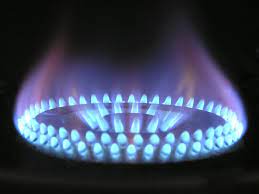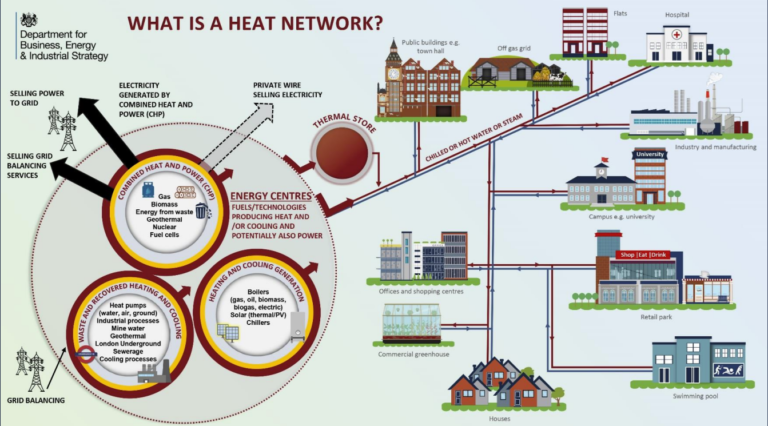Communal Vs. District Heating
When it comes to energy-efficient heating solutions, both communal and district heating systems play a crucial role. Although these systems share similarities, they differ in scale and application. Understanding these distinctions can help developers, building managers, and residents make informed decisions about heating solutions. Let’s explore the key differences, advantages, and examples of communal and district heating.
Communal Heating Networks
Communal heating, also known as centralised heating, serves a single building or site with a shared heat source. This source could be a boiler, heat pump, or another energy-efficient system, typically located on-site. Communal systems are commonly used in residential apartment blocks, offices, or other multi-occupancy buildings.
In a communal heating network, heat is generated centrally and distributed to individual units via a network of pipes. Each unit often has its own heat exchanger or meter, allowing users to control and monitor their energy consumption. This setup ensures that energy is utilised efficiently while providing flexibility for residents or tenants.
Example: Imagine a modern apartment block in Birmingham. The building’s basement houses a large gas boiler that provides heating and hot water for all the flats. Residents pay for their energy use based on individual metering. This system reduces the need for separate boilers in each flat, saving on costs and maintenance.
Benefits of Communal Heating:
- Cost-efficient installation for single-site buildings.
- Easier to maintain compared to multiple independent systems.
- Energy-efficient, particularly when combined with renewable energy sources like heat pumps or solar thermal panels.
District Heating Networks
District heating, on the other hand, is a large-scale heating solution that serves multiple buildings across a wider geographical area. A centralised heat source, such as a combined heat and power (CHP) plant, industrial waste heat, or a large-scale heat pump, generates heat that is distributed via a network of insulated pipes. These networks can support hundreds or even thousands of consumers, making them ideal for urban areas or large campuses.
District heating systems are often designed to accommodate diverse energy sources, including renewable options. Their scalability makes them a sustainable choice for reducing carbon emissions on a city-wide scale.
Example: Picture a district heating network in Manchester that supplies a residential estate, a school, and a shopping centre from a CHP plant located several miles away. Heat is transmitted efficiently through insulated underground pipes, providing consistent heating and hot water to all connected properties.
Benefits of District Heating:
- Scalable to serve large communities or cities.
- Enables integration of low-carbon and renewable energy sources.
- Reduces the carbon footprint of heating on a regional scale.
Key Differences Between Communal and District Heating
- Scale – Communal heating is confined to a single building or site, while district heating spans multiple buildings or even entire neighbourhoods.
- Heat Source Location – Communal systems usually have an on-site heat source, whereas district heating often relies on larger, centralised facilities
- Energy Distribution – District heating networks require more extensive infrastructure, including long insulated pipelines, to distribute heat over greater distances.
- End Users – Communal heating supports a smaller, defined group of users (e.g., residents of a block of flats), whereas district heating caters to diverse users, including residential, commercial, and industrial properties.
Choosing the Right Solution
Whether you’re managing a single building or planning an urban development, selecting the appropriate heating system depends on factors like scale, energy efficiency, and infrastructure costs. Both communal and district heating systems offer significant benefits in terms of energy savings and sustainability, but their suitability varies based on the project’s requirements.
How Ginger Energy Can Help
At Ginger Energy, we specialise in supporting heat networks across the UK, from Birmingham to Manchester and London. Whether you’re operating a communal heating system for a residential building or managing a city-wide district heating network, our expertise ensures efficient and cost-effective solutions tailored to your needs.
If you’re considering implementing or upgrading a heat network, get in touch with our team to find out how we can help you optimise your system and achieve your energy goals.
Explore the possibilities of communal and district heating with Ginger Energy.
Call us on: and 0345 307 3433
Email us on: and info@gingerenergy.co.uk




